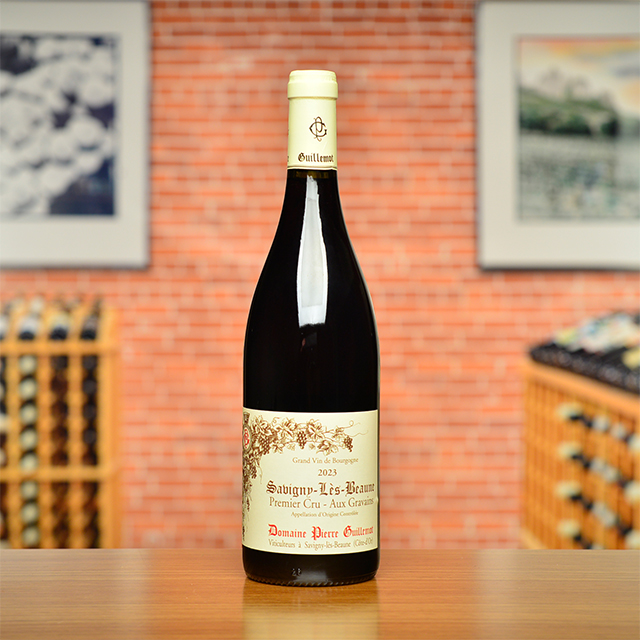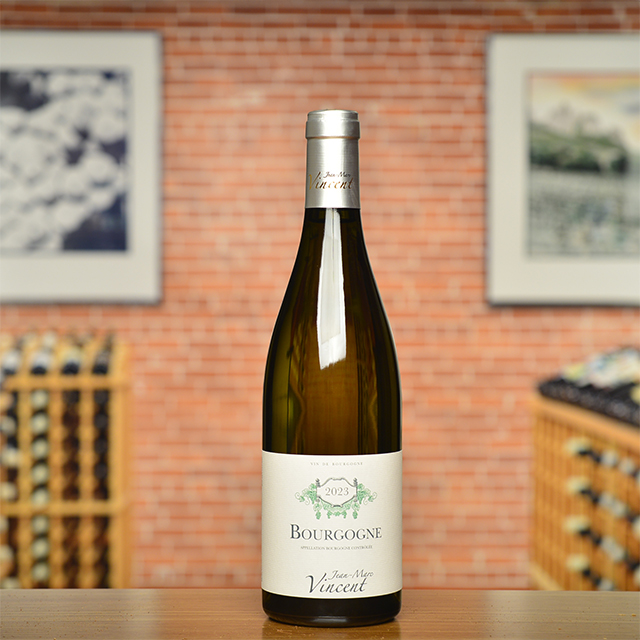Notify me
2018 Chassagne-Montrachet Blanc 1er Cru “Morgeot”
Bruno Colin
Bruno’s Morgeot is known for having the broadest shoulders of his large array of premier cru wines. Half-century-old vines, red clay soils, and a position on the southern tip of the village combine for quite a show. Far from shy, this one gives immediate pleasure with notes of creamy brioche and spice. For those who appreciate classic, masculine Chassagne.
—Chris Santini
| Wine Type: | white |
| Vintage: | 2018 |
| Bottle Size: | 750mL |
| Blend: | Chardonnay |
| Appellation: | Chassagne-Montrachet |
| Country: | France |
| Region: | Burgundy |
| Producer: | Bruno Colin |
| Winemaker: | Bruno Colin |
| Vineyard: | 48 years, 0.42 ha |
| Soil: | Clay, limestone |
| Aging: | Raised in barrel for 18 months before bottling |
| Farming: | Lutte Raisonnée |
| Alcohol: | 13% |
More from this Producer or Region

2022 Bourgogne Chardonnay
France | Burgundy
Its complex nose, redolent of honeydew and baking spice, leads to a beautiful richness on the palate and a refreshing, stony, slightly saline finish

2022 Chassagne-Montrachet Rouge “Vieilles Vignes”
France | Burgundy
This Chassagne is razor sharp, pure fruited, and packed with pleasure.

2022 Marsannay Blanc “Clos du Roy”
France | Burgundy
I find the Clos du Roy blanc to be quite versatile at my house in Meursault, especially with fowl, pork, and veal.

2022 Chassagne-Montrachet 1er Cru “Les Vergers”
France | Burgundy
Enter Bruno Colin’s pristine, sacrosanct cellar and you immediately sense that something precious, almost invaluable, dwells within those beautiful limestone walls.

2023 Savigny-Lès-Beaune 1er Cru “Aux Gravains”
France | Burgundy
Succulent and concentrated with a magnificent grain, this cuvée is always among the more earthy and savory of Guillemot’s lineup.

2022 Santenay Rouge “Vieilles Vignes”
France | Burgundy
Old vines in Santenay produced this classy red that can be enjoyed now or cellared for three to five years for additional complexity.

2022 Puligny-Montrachet 1er Cru “La Truffière”
France | Burgundy
Complex aromas, flesh, depth; the classic chiseled back end you’d expect from well-made Puligny.

2022 Savigny-Lès-Beaune “Les Grands Picotins”
France | Burgundy
This is Guillemot’s most easily approachable, fun Savigny for drinking young.

2021 Bourgogne Hautes Côtes de Beaune
France | Burgundy
Lots of herbs and lemon curd precede its dry, racy finish. It’s a mouthwatering, drink-me-now white Burgundy.

2022 Beaune 1er Cru “Les Epenottes”
France | Burgundy
The darkest, deepest, and most structured of the Jobard lineup.
About The Producer
Bruno Colin
About The Region
Burgundy

In eastern central France, Burgundy is nestled between the wine regions of Champagne to the north, the Jura to the east, the Loire to the west, and the Rhône to the south. This is the terroir par excellence for producing world-class Pinot Noir and Chardonnay.
The southeast-facing hillside between Dijon in the north and Maranges in the south is known as the Côte d’Or or “golden slope.” The Côte d’Or comprises two main sections, both composed of limestone and clay soils: the Côte de Nuits in the northern sector, and the Côte de Beaune in the south. Both areas produce magnificent whites and reds, although the Côte de Beaune produces more white wine and the Côte de Nuits more red.
Chablis is Burgundy’s northern outpost, known for its flinty and age-worthy Chardonnays planted in Kimmeridgian limestone on an ancient seabed. Vézelay is a smaller area south of Chablis with similar qualities, although the limestone there is not Kimmeridgian.
To the south of the Côte de Beaune, the Côte Chalonnaise extends from Chagny on its northern end, down past Chalon-sur-Saône and encompasses the appellations of Bouzeron in the north, followed by Rully, Mercurey, Givry, and Montagny.
Directly south of the Chalonnaise begins the Côte Mâconnais, which extends south past Mâcon to the hamlets of Fuissé, Vinzelles, Chaintré, and Saint-Véran. The Mâconnais is prime Chardonnay country and contains an incredible diversity of soils.
More from Burgundy or France
2023 Marsannay Rouge “Clos du Roy”
René Bouvier France | Burgundy
2023 Savigny-Lès-Beaune “Vieilles Vignes”
Domaine Pierre Guillemot France | Burgundy
2017 Mazoyères Chambertin Grand Cru
Domaine Taupenot-Merme France | Burgundy
2022 Santenay Rouge “Vieilles Vignes”
Bruno Colin France | Burgundy
2023 Petit Chablis “Les Grenouillères”
Roland Lavantureux France | Burgundy
2022 Corton Grand Cru
Domaine Follin-Arbelet France | Burgundy
2023 Savigny-Lès-Beaune 1er Cru “Aux Gravains”
Domaine Pierre Guillemot France | Burgundy
2022 Irancy “La Grande Côte”
Benoît Cantin France | Burgundy
2022 Chassagne-Montrachet 1er Cru “Les Vergers”
Bruno Colin France | Burgundy
2019 Nuits Saint Georges 1er Cru “Les Pruliers”
Domaine Taupenot-Merme France | Burgundy
2023 Chablis “Vaux Carrés”
Domaine Roland Lavantureux France | Burgundy
2022 Pommard 1er Cru “Les Fremiers”
Domaine Lucien Boillot et Fils France | Burgundy
2023 Marsannay Rouge “Clos du Roy”
René Bouvier France | Burgundy
2023 Savigny-Lès-Beaune “Vieilles Vignes”
Domaine Pierre Guillemot France | Burgundy
2017 Mazoyères Chambertin Grand Cru
Domaine Taupenot-Merme France | Burgundy
2022 Santenay Rouge “Vieilles Vignes”
Bruno Colin France | Burgundy
2023 Petit Chablis “Les Grenouillères”
Roland Lavantureux France | Burgundy
2022 Corton Grand Cru
Domaine Follin-Arbelet France | Burgundy
2023 Savigny-Lès-Beaune 1er Cru “Aux Gravains”
Domaine Pierre Guillemot France | Burgundy
2022 Irancy “La Grande Côte”
Benoît Cantin France | Burgundy
2022 Chassagne-Montrachet 1er Cru “Les Vergers”
Bruno Colin France | Burgundy
2019 Nuits Saint Georges 1er Cru “Les Pruliers”
Domaine Taupenot-Merme France | Burgundy
2023 Chablis “Vaux Carrés”
Domaine Roland Lavantureux France | Burgundy
2022 Pommard 1er Cru “Les Fremiers”
Domaine Lucien Boillot et Fils France | Burgundy
Where the newsletter started

Where the newsletter started
Every three or four months I would send my clients a cheaply made list of my inventory, but it began to dawn on me that business did not pick up afterwards. It occurred to me that my clientele might not know what Château Grillet is, either. One month in 1974 I had an especially esoteric collection of wines arriving, so I decided to put a short explanation about each wine into my price list, to try and let my clients know what to expect when they uncorked a bottle. The day after I mailed that brochure, people showed up at the shop, and that is how these little propaganda pieces for fine wine were born.—Kermit Lynch

















